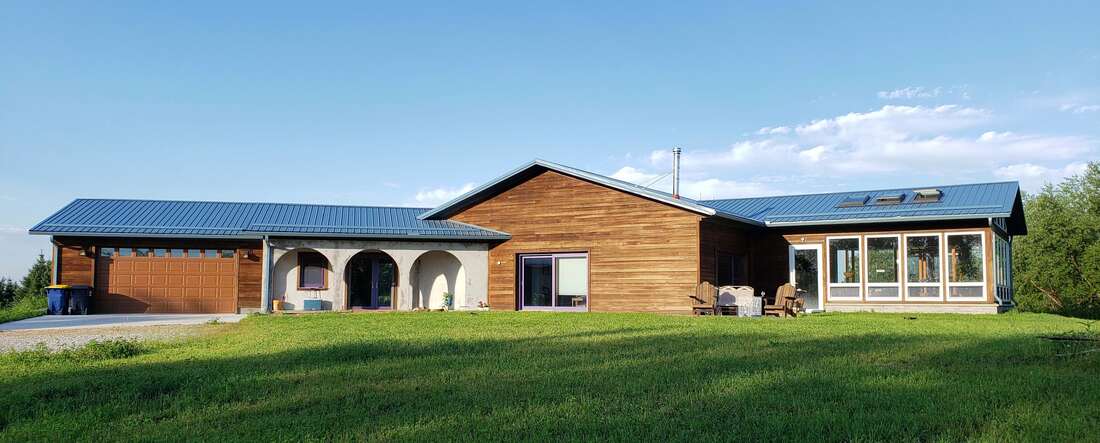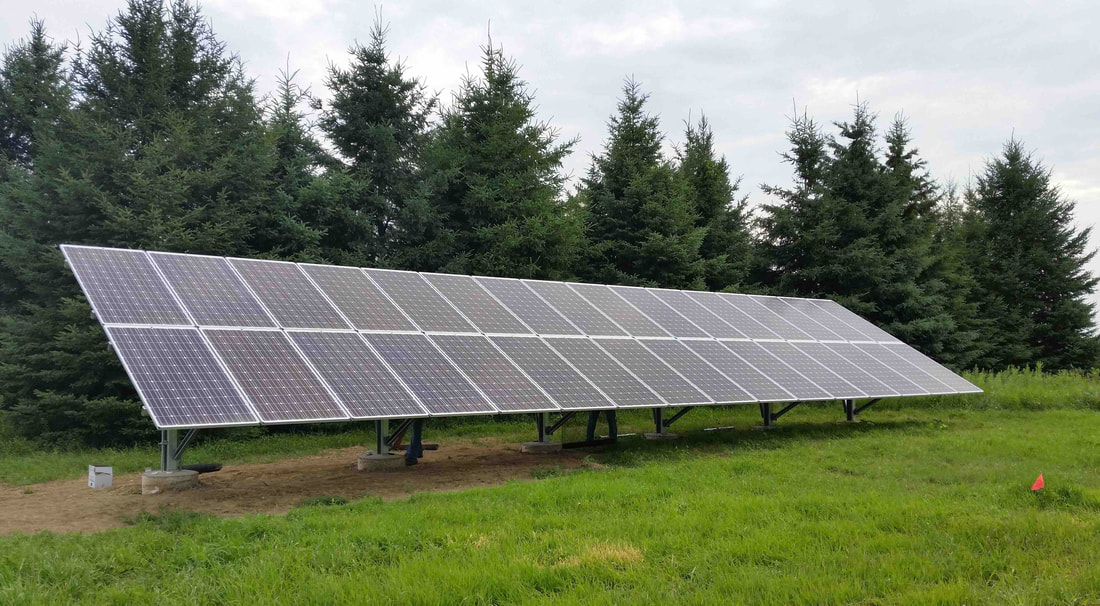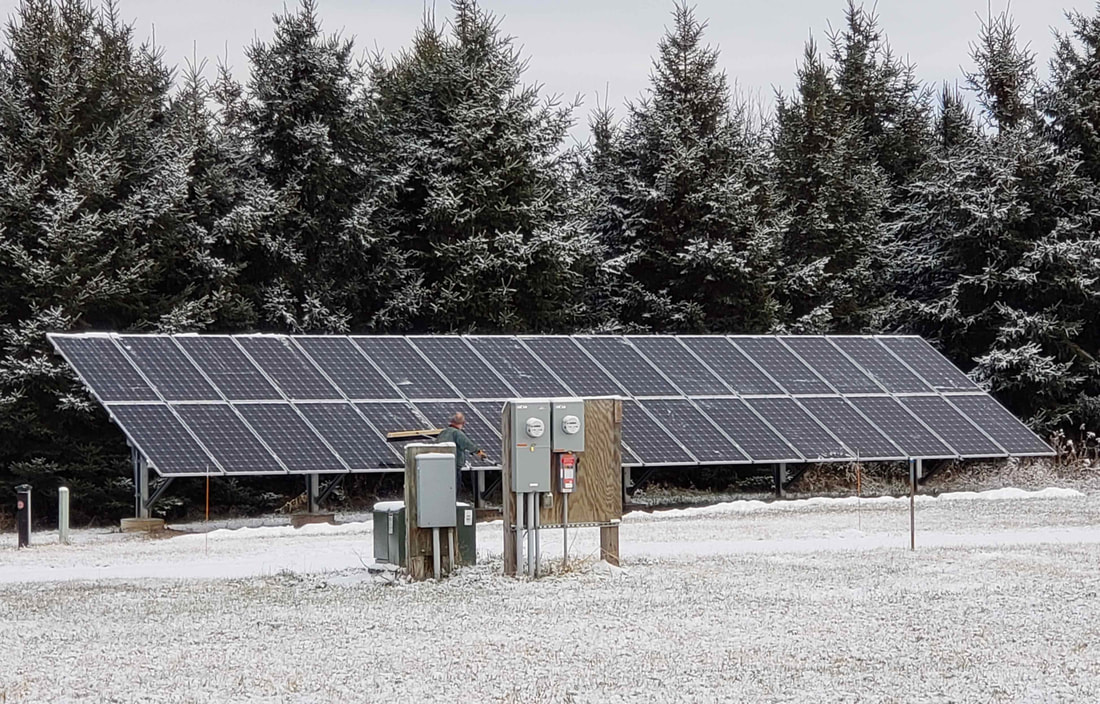|
Introduction: Anderson Sustainable Architecture Blog
The owners have been living in their Passive House for a little over a year and it is performing very well. The home is comfortable year round. For now the floors are exposed concrete which is warm enough for bare feet even in the winter. During the bitter cold polar vortex last winter, they turned off the heat pump and comfortably heated the home completely with a small wood stove in the living room. The homes energy recovery ventilator manages humidity levels year round and they really enjoy the high indoor air quality, even without a HEPA grade filter. "The quietest home they have ever lived in", they enjoy the peace their home brings. The home was designed around their work from home, cooking, entertaining and gardening lifestyle. The design allows for circular travel through the home, saving footsteps and simplifying living. The home is sited for great views and they call their home "Skyview Farm". They are looking forward to aging in place with the universal design accommodations they chose to make. The greenhouse grows produce year around. The temperature gets up to 70 degrees during the day and down to 40 degrees at night in winter, with a small electric resistance heater protecting plants on the coldest nights. They love keeping the passive house rated doors between the kitchen/dining and greenhouse open to bring moist garden fresh air into the home. Experimenting on which plants grow best, they use grow lights 12 hours a day for optimum growth. The wood framed greenhouse fits into their design aesthetic, with the operable skylights providing great ventilation and modest daylighting. The root cellar keeps the fruits of their greenhouse and summer outdoor garden cool through the summer and winter. The root cellar also functions as a storm shelter. The 4-season porch provides a great breezeway, extending the outdoor living season. It doubles as extra sleeping accommodations for guests. The home is actually made up of 5 buildings, each designed to make optimal use of the sun's energy, the earth's cooling potential and appropriate insulated envelope (floor, walls & roof) design. The home consists of the Passive House primary living area, the greenhouse, the root cellar, the 4-season porch and the garage. Solar array in summer and winter. The Owner's receive checks from their electric utility every month for excess photovoltaic electricity produced. Photovoltaic panels work great in Minnesota, with long summer days and cold clear, though shorter, winter days. PV performance in the Twin Cities is actually better than Houston, TX, where the combination of hotter weather and cloudy days decreases performance. Thank you for attending the tour! The home is Net-Zero Energy, however, the entire building does consume more than it creates due to energy used to heat the green house at night in the winter. This could be considered to be a process load, beyond the energy required to run the house. For example, on another project, the excess energy could have been used to power an electric vehicle. Randy (client) and Mark (architect) (both above photo) discussing the concrete reinforcing and formwork. Randy and Mark took the excellent Logix ICF (insulated concrete formwork) hands-on installation training. Randy to erect the ICF and Mark to design it efficiently. Our clients self-performed a lot of work on the house. For the foundations, they cut the foundation high-density foam insulation and created the footing formwork with it. They set the formwork over the waterproofing and gravel bed. Later, they laid up the ICF walls, placed the waterproofing, vapor retarder and joint tape. The foundation insulation foam is designed to support buildings. Similar foams are used at bridges and airport runways where they carry heavier loads and endure impacts from landing aircraft, etc... .
Education, advocacy, learning and milestones.
0 Comments
Your comment will be posted after it is approved.
Leave a Reply. |
Mark Anderson, AIA, CPHCFor my day job, I'm an architect focused on green design. Not a bad gig! Caring for the planet is a theme throughout my life. This page is where I like to talk about how that love for the earth plays out – in architecture and in my life. Archives
July 2023
Categories |




 RSS Feed
RSS Feed




